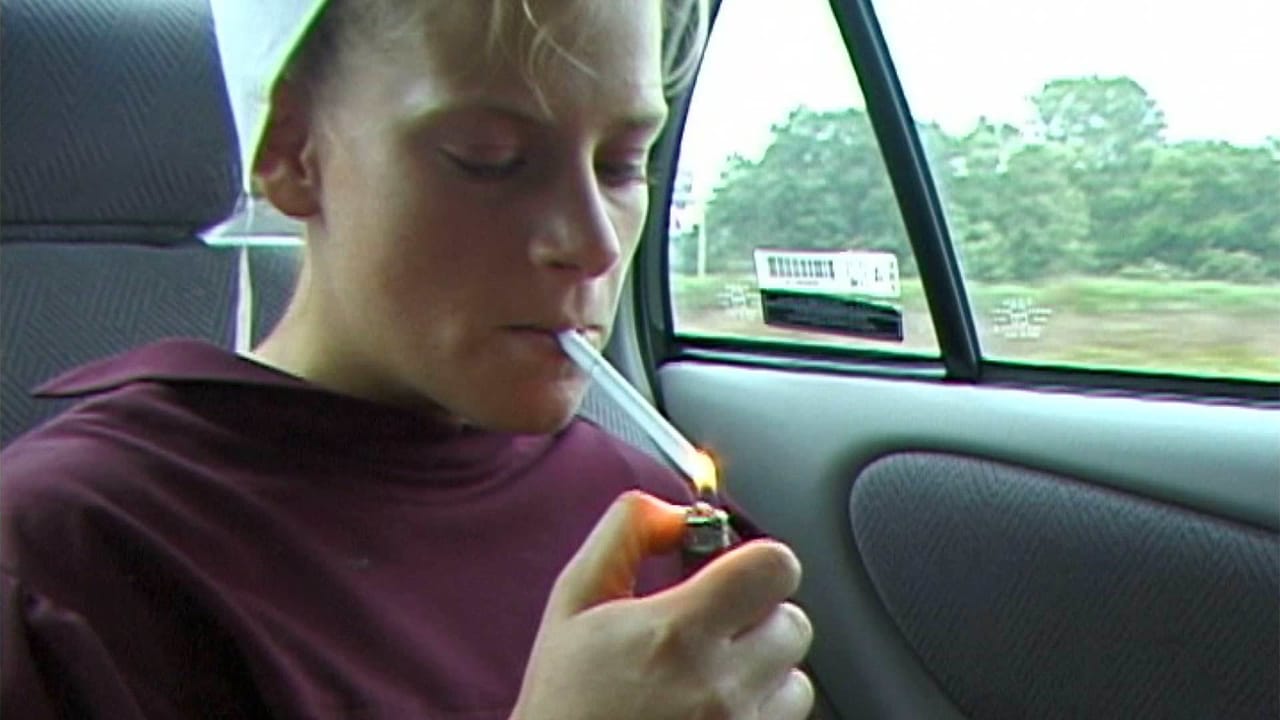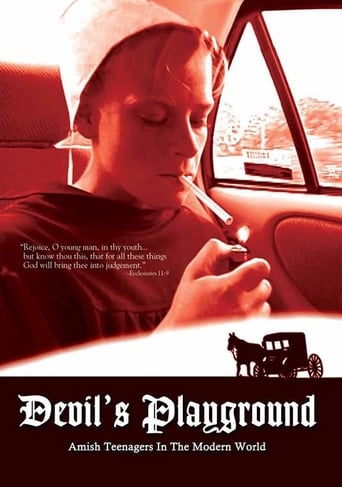

This movie overall was very interesting. Before watching it, I knew very little about the Amish customs and their beliefs. The movie starts out showing how the Amish live their lives, which are in very simple, small, close knit communities and they all are very strict on religion. The Amish faith believes that they should let their teenagers be able to choose if they want to follow the Amish faith by letting them go free into the "English" world and see what life is like there. Through that Rite-of-Passage, they would hope that the teenagers will then be able to go and choose if they want to live in that type of lifestyle with technology and innovations, or if they want to come back and live a very simple life with no power or any things that would separate you from the family life. What I personally thought was very interesting is the struggle the kids had to go through when they decided on which faith they wanted to follow. Many wanted to live the English lifestyle and have cars, television, and stuff to do, but the thing they struggled with the most is being shunned from their community if they decided to leave and many couldn't live with the thought that if they were to leave, they would lose all of their friends and family in which they grew up with. Overall very interesting theme and story behind the movie. I thought it was a very interesting documentary.
... View MoreThis is an interesting insight into part of the Amish way of life. Kudos to Lucy Walker for her frank and eye opening documentary. The Amish church began in about 1693 in Europe and most of that faith migrated to select areas of the U.S. in 1860. Amish children 16 to 21 years of age are released from their very strict world to experience all the pleasures and freedoms of the outside "English" world. This tumultuous time is called 'rumspringa', these young people during this time must decide to return to the ways of their parents and the Amish or stay on the outside. The focus of this documentary follows several teens as they experience "hoedowns' and "barnhops", delving into drugs, sex, malls and rock 'n' roll. Rumspringa may last from months to years.
... View MoreContains spoilers... This movie cannot really call itself a documentary on the Amish, as the Amish themselves largely decline to be interviewed. One wonders why the film- makers bothered to make this movie, given the lack of cooperation on the part of their alleged subjects. The first few minutes of the "Commentary" feature on DVD sheds some light on this question: the film-makers seem to have been desperate to get something, anything, on HBO, and not until they came up with the tabloid story about an Amish kid who is hooked on crystal meth would they be accepted by HBO. Too bad they had to advertise it as a "glimpse into the lives of the rarely filmed Amish" -- this movie is simply not about the Amish. It does not give any context for the radical transition called "Rumspringa". It does not attempt to discuss how an Amish teen is prepared via their community for Rumspringa or how they perceive the "rite" before, during, or after going through it. The Amish are shown us utterly unreflective, and I can only assume that this is an utterly unfair representation of them. They were not ready to be filmed, for their own reasons, but the film-makers were all too ready to make this film, for their own, rather different reasons.
... View MoreTo a large extent, the inherent friction between America's central majority and diverse religious minority groups is controlled and channeled by a matrix of Constitutional Law principles. Court decisions insure that minority rights are protected against what often has been the mainstream's desire or perceived need to force assimilation or even attempt destruction through law or mob action. The latter has happened in American history with regard to the Shakers and Mormons. Both groups and Southern snake-handling churches have frequently encountered major legal restrictions. .The Amish occupy a more protected place than some other Christian fundamentalists. Living in large communities side by side with the "english", as they call without distinction all others, their energy, excellent and desired produce and products and reputation for orderly, crime-free lives has insured respect. Temptation rather than persecution is the main foe of the Amish commitment to a simple lifestyle.Director Lucy Walker's documentary, "Devil's Playground" is a rare but possibly too limited view of Amish life, largely in Indiana. The Amish covet their privacy and most members of the church do not allow themselves to be filmed or interviewed although strictures vary from community to community. Generally, the Amish eschew using much of the apparatus of American communal and political life. For instance, while they will not send children to public school past the eighth grade, relief from compulsory education laws through a Supreme Court decision only came about because several Amish parents passively permitted others to litigate on their behalf (Wisconsin v. Yoder)."Devil's Playground" introduces the viewer to "rumspiga," the planned release off the parental and community leash of teenagers on their sixteenth birthday. According to the young men and women interviewed, virtually anything goes during an indefinite period of freedom that can end in a few months or go on to age 21. At some point each youth decides whether to embark on a life outside Amish society or take church vows that are considered inviolable once voluntarily assumed. Defectors are shunned by family and friends if they leave the church after taking the vows.The film follows Amish youth to huge parties monitored by justifiably concerned Indiana police. Sex appears to be a route for some but dancing and excessive consumption of alcohol is a key activity for most, especially the males. Some fall into the world of drugs, including dealing. Faron, a clearly troubled young man, is followed by the camera crew from innocent flirtation and all-night partying to serious drug taking to felony selling. Subsequent threats to his life came after he cooperated with the police.The females seem to be more hesitant about unshackling fetters than males. The boys all adopt everyday teen garb while the girls experiment with beer and cosmetics but largely remain clothed in traditional attire. Interestingly, many of the boys take on "english" girlfriends, a safety mechanism that actually lessens the likelihood of their permanently abandoning their community.A number of Amish youths discuss their family relations and whether they will join the church or adopt a new lifestyle. Many comments have a rehearsed quality, not surprising when the speakers haven't been brought up to freely express themselves.A postscript notes that some ninety percent of Amish youth resolve to join the church, giving up cars for buggies, t-shirts for bland work clothes and beer for juice. One clear clue as to why the retention rate is so high is the virtual total lack of intellectual curiosity or desire for education in the Amish youth population. What seems to be a period of genuine freedom is really a very clever release of people whose likelihood to question or rebel is suitably repressed rather than advanced by an episode of largely aimless partying.What isn't clear from "Devil's Playground" is the extent to which Amish youth in general go as hog wild as the participants in the documentary. The young interviewees wanted the attention of the film-maker for reasons ranging from narcissism to a need to self-justify life-altering decisions. It would have been very useful to incorporate insights from non-Amish scholars, including psychologists, who could discuss the teens' experiences and responses in a measured objectivity.But this is one fine documentary.8/10.
... View More